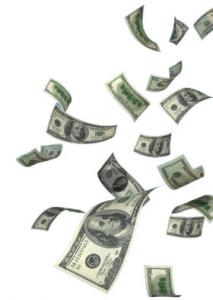Looking for design inspiration? Browse our curated collections!
Blog #114 of 137
 Previous
Previous
|
Next
March 27th, 2010 - 06:51 PM

When I made the decision to print my own photographs with a professional quality inkjet printer (Canon Pro9500) the main issue driving my decision was control. The final output would hopefully look the way I intended it to look and not the way a third party printer decided it should look. I knew this would be a decision that would cost me money, but the end result would make up the difference.
Excluding the cost of labor to produce a print, it appears that in-house printing is less costly than sending files to a high quality printing lab. When you look at the final result the cost of paper and ink is negligible, however, it is rare that a file goes from computer to printout in one pass. The final product may be preceded by numerous small proof prints and full size proofs. Once this was done the proofing process may have been repeated on different types of paper. In a worst case scenario a nice 11”x14” print that sells for $150 may have cost $200 when all of the proofs are tallied and we aren’t including labor costs.
Rethinking the situation brings us back to labor which really must be included in the costs. With digital inkjet printing, the labor and time spent includes viewing, selecting, image editing, printer setup and printing. This time could be reduced with the use of automation tools, but the whole point is to get away from automation and create a fine art print that looks the way it was intended to look.
These costs are somewhat obvious, but what about the hidden costs and potential savings in inkjet printing? As far as savings go it pays to shop around. There are always promotional offers and quantity discounts that are not publicly announced. On-line stores can usually give better prices than local specialty stores, but shopping around and asking questions can yield surprising results at times. The printer itself can be a money saver or a money pit. Some inkjet printers use quite a bit of ink doing routine maintenance like print head cleaning. Epson printers seem to be guilty of this compared to Canon printers.
While I’m on the subject of ink, different inkjet media require different inks. Photo-finish papers like glossy and satin require photo black ink to achieve good dynamic range and contrast. Matte and watercolor inkjet media require photo matte ink. The Epson Stylus Pro, requires ink line purging to switch between these inks since they will only hold one black ink. One of the reasons I purchased a Canon Pro9500 is because it holds both the photo black and matte black ink cartridges meaning that a matte paper can be printed and then a glossy paper can be printed without wasting ink due to cartridge changes. In the case of some Epson printers, maintenance and ink switching can cost hundreds of dollars more a year than other brand printers.
In spite of these hidden costs the value of producing my own fine art prints outweighs any additional cost. I think, in most cases, that an experienced artist can produce prints that are much better than anything produced by a third party printer. In addition to quality, the buyer is getting a product that is 100% artist made.
Pete Hellmann Photography
Comments
There are no comments on this blog. Click here to post the first comment.